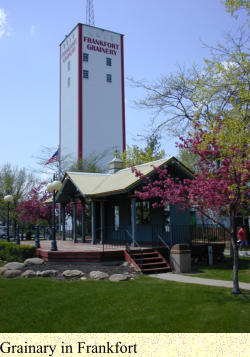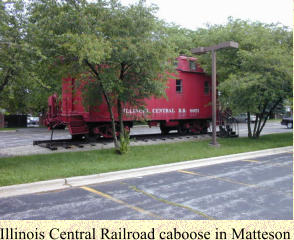Trail History
The Old Plank Road Trail has seen lots of changes over the past 150 years.
Before 1850 it was a major communication, trading and transportation corridor for
Native Americans and the occasional missionary, fur trader, trapper, or explorer. In
1796, the British forces at Amherstburg, Ontario, Canada (near the mouth of the
Detroit River) called this path the Sauk Trail becuase it was traveled by Native
Americans from Wisconsin and Illinois on their way to Fort Malden in
Amherstburg. The British, and later the Americans, made payments to the various
tribes to fulfill treaty obligations.
Since 1850 the path of the Old Plank Road Trail has been an emigration route for
European settlers looking for land to settle on.
The first roads and railroads followed the paths
and trails used by Native Americans.
When German emigrants settled in the
area in the nineteenth-century the
railroad was used for transportation of
grain and livestock.
The route is a communication and
transportation hub for our modern
society. The OPRT area is a railroad
corridor, the route of oil and gas
pipelines, Chicago's link to the electric
distribution grid, a crossroad of
Interstate traffic, and the home of
microwave, copper and fiber optic
networks that link the nation with Internet, telephone and television services.
Now the trail is a recreation and nature preserve but there's plenty of evidence along
the right-of-way of other and older uses. History pages 1 through 7 and the timeline
will give you a better idea of what came before.
You'll see things in a new and different light the next time you travel down the OPRT.





Railroad milepost telling locomotive engineer
that his train is 30 miles west of East Gary yard.

Railroad milepost telling locomotive engineer
that his train is 30 miles west of East Gary yard.
Old Plank Road Trail
A 22-mile recreation and nature trail in northeastern Illinois




















